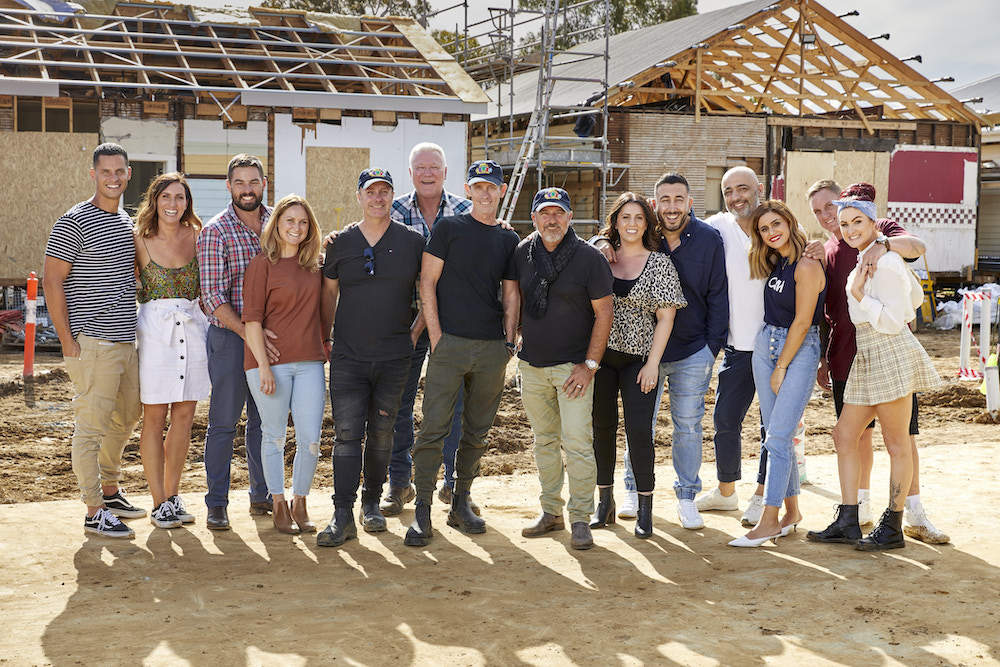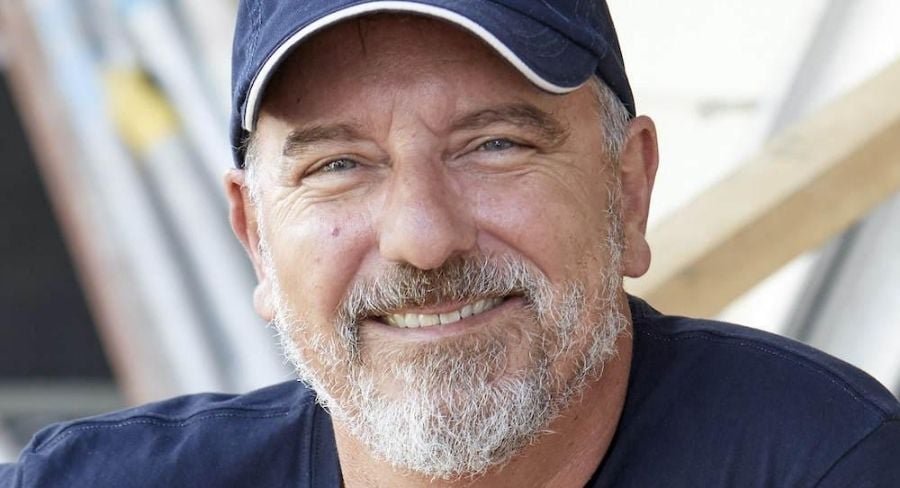The upside of the Melbourne lockdown for Julian Cress, co-creator and executive producer of The Block, is that it could boost the audience for the primetime program. “For the first time in history the Government has locked up the citizens of one major state in primetime viewing hours,” Cress told Mediaweek. “By the time we started on Sunday night, I was hoping many people will have also run out of things to watch on Netflix, giving us a good platform to launch on.”
To state the obvious, it’s been a very different series this year. “When we spoke last year I noted for the Oslo project The Block crossed an imaginary line, and we never knew where that line was until we crossed it. The challenge we set the contestants last year was definitely the hardest we had ever set and very probably too hard. Back then we vowed we would never do it again.
“Here we are in 2020 and we are making what is now truly the hardest Block ever because of Covid.”
Cress said it wasn’t easy sourcing the five homes from different periods that have been relocated to the Brighton site. “We set the bar high in 2017. It was difficult finding the houses that year for our Elsternwick series. This time when I decided to look for houses from different decades it made it even harder.”
There was no plan to have successive decades from 1910 to 1950 represented, it just played out that way. “There were lots of interesting styles happening from Federation onwards including art deco into mid-century architecture. The audience will enjoy watching the contestants wrestle with the challenge of designing for a particular decade.”
The houses are all from Melbourne suburbs and are structures that would have otherwise been demolished. “We are glad to have been able to have saved them. The person who built one of the homes with his own hands is thrilled it is on The Block.”
See also:
The Block 2020: Everything you need to know about the Brighton houses
The biggest help the contestants get during any series comes from the judges – Neale Whitaker, Shaynna Blaze and Darren Palmer – when they give direct advice in their assessments about the quality of the work and if needed, intervene with direct advice if they think the design will impact the sale price. “That is something that happens in this series as well,” said Cress.

The 2020 Blockheads with Scotty Cam and the men in black – EPs (left to right), Justin Sturzaker, David Barbour and Julian Cress
The show’s architect Julian Brenchley designs an “envelope” that can be followed. “The contestants can choose to fit that out and play with the layout internally and the fitout as much as they like,” said Cress.
For the first time on The Block this year is a father and daughter team. “That is such an interesting dynamic. We are essentially a family show and we know a lot of our audience are fathers and daughters and mothers and sons. The relationship between Harry and Tash and the way they went about renovating is fascinating. Tash moved out of home some time ago so it’s not as if they had been sharing a house and it’s been a while since they had been together 24/7. How that dynamic plays out across three months makes for some very entertaining television. It’s a hell of a bonding experience for a father and daughter and it’s more time than they would ever spend together at that stage of life.”
See also:
The Block 2020: Everything you need to know about the contestants
New motoring partner drives into Brighton
Cress: “We have great support from our sponsors and most of them return year after year. This year we do have a new automotive sponsor in Ford Motor Company. They gave us some great vehicles for this season. Otherwise the sponsors remain pretty much the same. Once sponsors sign onto The Block it is unusual for them to leave.”
Cress said the show feels lucky to have had such long-term relationships. “There is no room for any sponsors. One has to leave before anyone can sign up. We have 11 major sponsors this series. In addition to that we have 15 major suppliers as well who support us year after year.
“Mitre 10 has been with The Block for 15 series and McCafe has been with us for nine series. It is great to be able to work with companies who return year after year.”
Covid impact
During the first Melbourne lockdown, Nine sent the contestants home, but the tradies kept working.
Cress: “Our shutdown was pretty brutal, but it was something we felt we had to do. We were very lucky that construction was allowed to continue. Work on the structural envelope of the houses continued while the contestants were away. That allowed us to start up again earlier than we might have been because the structure provided the shelter for conforming with new Covid restrictions. We were able achieve the necessary physical distancing. That exemption from lockdown for construction probably saved us and allowed us to get the show in the can before the disastrous second wave hit. We managed to finish filming with just a week to spare before the second lockdown.
“There have been other productions that have suffered much more than we did as they have not been able to complete.”
Cress and his co-creator David Barbour will see the show wrap just before the end of the ratings year in November. Despite the impact of Covid, they have still been able to deliver around 50 episodes. The series ran for 47 in 2018 and 57 in 2019.
“This year it feels to me like it is the right show at the right time. Statistics from the ABS show that people locked up in their own homes and not allowed to travel have saved something like $38b which many are looking to spend on their own homes. A show like ours that is full of ideas about what to do with your own home at this time might be just the thing they need.”
While Cress looks after filming during construction, Barbour is in charge of post-production. He’s well ahead of schedule this season too. “David is currently editing episodes for the last week of the show which won’t be on air for 12 weeks. He started editing as we started shooting way back in February and he’s way ahead.”
See also:
The Block: Everything you need to know about the Scotty, Shelley, the judges & foremen
Auctions: Show me the money
Cress: “I’m remaining optimistic that the current lockdown in Victoria will be effective and the economy will be able to open up again in time for us to hold our auctions as planned in late November. Three months from now I would like to think we will be back to some semblance of normality.
“If the state of Victoria is still in a full lockdown at the end of November then we will have much bigger problems than The Block.”
Whatever form the auctions have to take, these homes could attract some serious money for prestige properties in the affluent Melbourne suburb of Brighton.
“We are fortunate to be in Brighton. It is a pocket real estate that can withstand a lot of market pressure, even from global pandemics. In a remarkable twist of fate Julian Brenchley was able to create enough living spaces in the homes that the contestants were able to fit out with work from home spaces.”
The size of the land for each house sits around just under 500 square metres. Cress noted “each house is at least five bedrooms, two living spaces, generous front and back yards and each house comes with a swimming pool for the first time.” Run the comps for similar properties in Brighton and you get an idea how much these properties could be worth.
Last year the contestants won what was called “life-changing money”, amounts ranging from $730,000 for the winners down to 384,000.
The Block property locked in for 2021
Producing a show this size and this critical to the Nine Network means you are always planning what is next, if the show gets renewed. That means keeping an eye out for the next property play. Has Cress secured some land for the 2021 season? “We have,” was his response. “We always operate on the supreme confidence we will get another series. We cross our fingers every year and hope people will want to keep watching. We have property for next year’s series and are looking forward to getting stuck into that, Covid-willing.”
—
Top photo: Julian Cress
